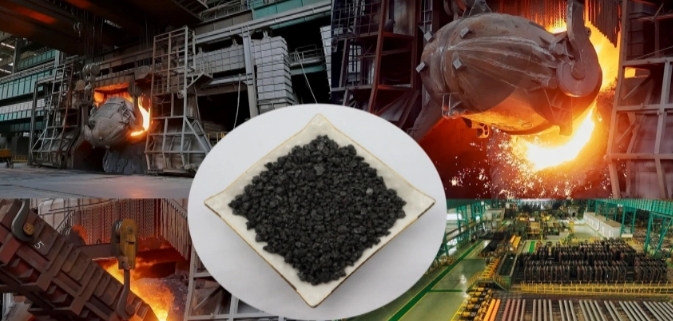
The production of graphite for use in nuclear reactors requires that it be substantially free of impurities which have a high neutron capture cross section. The neutron economy in the reactor is affected by boron (cadmium), vanadium and other impurities. To be efficient, graphite has to meet certain requirements in terms of size and shape. During the manufacturing of natural coal graphite, coke production is crucial. It is not readily controllable and the composition of coke has an impact on the quality of the final product, a critical consideration in the production of moderator graphite for nuclear reactors.
Petcoke is the principal carbon source for the production of graphite. The material, which is produced by crude oil refinement and has a high carbon content, is called petroleum coke. After undergoing a heat treatment, the crude coke becomes petroleum coke proper. CPP can then be converted by graphitizing into graphite.
In conventional processes the coke is subjected to a calcination process which decomposes it and reduces its moisture content. To do this, spray oxygenated liquid petroleum onto the coke. This will then be heated up in a Rotary Kiln between temperatures of 1100 and 1400 C. It reduces the amount that the hydrocarbon is evaporating and increases the amount carbon in the final calcined petroleum.

The calcined petroleum is then fed into the graphitizing oven where it undergoes both a chemical and physical reaction that transforms it to crystalline graphite. GPC then finds use in a number of different applications including pre-baked cathodes and cast anodes used by the aluminum and steel industries, and graphite electrodes. Other industrial uses include graphite electrodes. The flake or granulated form of graphite, which is formed by calcining coke, can also be used to make battery material.
Graphite produced from petroleum coke is characterized by its spheroidal lattice structure, as illustrated in Supplementary Fig. 2. The spheroidal lattice is similar to that of graphite derived from natural graphite. GPC made with calcined petrol coke differs in that it contains less large particles.
It is treated further to eliminate impurities as well as to increase the density of the graphite. To achieve high purity, dense graphite, it is necessary to impregnate the shaped material with a densifier. In general, 30 parts per weight of binder is used for every 100 parts of calcined oil coke. The process is relatively easy to do and costs little. The spheroidal nature of crystalline-graphite moderators is critical to their effectiveness in nuclear reactors, because they allow more neutrons pass through them than would have been possible with non-spheroidal crystals.

Write a Message